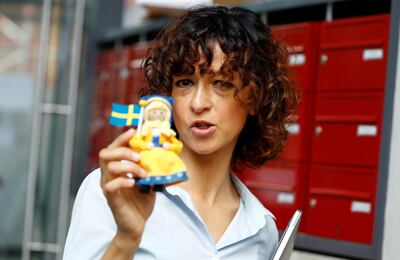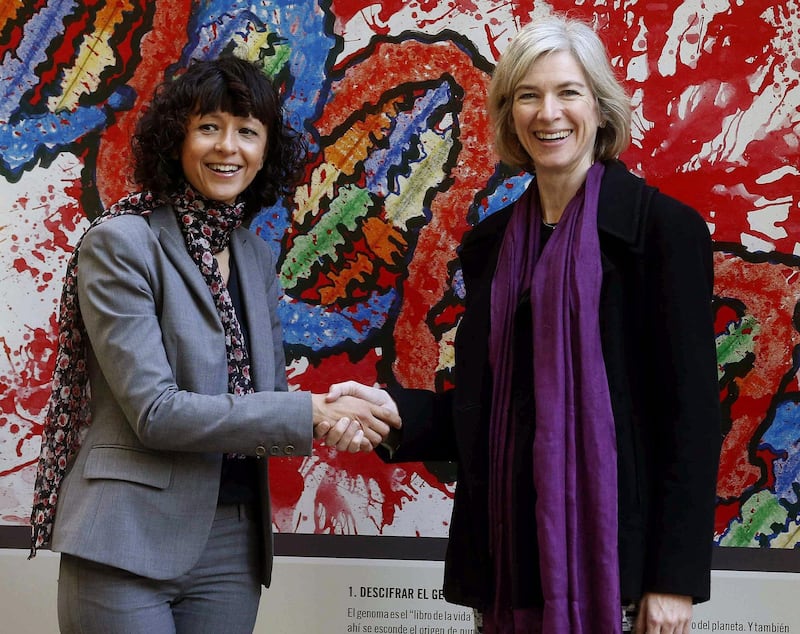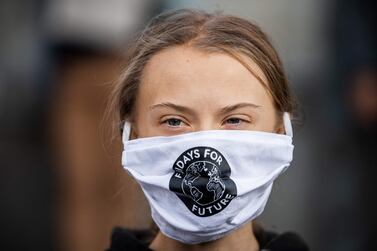Two female scientists won the 2020 Nobel Prize in Chemistry on Wednesday for creating genetic "scissors" that can rewrite the code of life, contributing to new cancer therapies and holding out the prospect of curing hereditary diseases.
Emmanuelle Charpentier, who is French, and American Jennifer Doudna share the 10 million Swedish crown ($1.1 million) prize for developing the CRISPR/Cas9 tool to precisely edit the DNA of animals, plants and microorganisms.
"The ability to cut the DNA where you want has revolutionised the life sciences," Pernilla Wittung Stafshede of the Swedish Academy of Sciences told an award ceremony.
Ms Charpentier, 51, and Ms Doudna, 56, become the sixth and seventh women to win a Nobel for chemistry, joining Marie Curie, who won in 1911, and more recently, Frances Arnold, in 2018.
It is the first time since 1964, when Britain's Dorothy Crowfoot Hodgkin alone won the award, that no men are among the chemistry prize winners.
Ms Charpentier, of the Max Planck Institute for the Science of Pathogens in Berlin, said she was "very emotional" after getting a call from Stockholm with the news.

"When it happens you are very surprised, and you feel that it is not real," she said. "But obviously it is real so I have to get used to it now."
She hoped that winning the award would send a "strong message" to young girls looking to enter science.
"I wish that the fact that Jennifer Doudna and myself are awarded today can really provide a really strong message for young girls," Charpentier told reporters in Stockholm via a telephone link.
Ms Doudna is already employing CRISPR to fight the coronavirus pandemic as co-founder of biotech startup Mammoth, which has tied up with GlaxoSmithKline to develop a Covid-19 test.
Discovery through ancient bacteria
Ms Charpentier's breakthrough came in the study of ancient bacteria, Streptococcus pyogenes, when she found that a previously unknown molecule was part of its immune system and was capable of 'cleaving' DNA.
She published her findings in 2011 and, in that year, joined forces with biochemist Ms Doudna, of the University of California, Berkeley, to recreate the bacteria's genetic scissors in a test tube and simplifying their molecular composition to make them easier to use.
The duo published their findings in June 2012, seven months before the Broad Institute group, which however successfully filed a series of US patent applications and has claimed that its gene editing technology is better.
DNA is a string with up to 6 billion coded instructions that tell a cell what to do. CRISPR/Cas9 can not only snip DNA at the right spot, but it can also repair the join so errors to come in.
Today CRISPR/Cas9 is a common tool in biochemistry and molecular biology labs - used in plant treatments and to develop novel treatments of hereditary diseases such as sickle-cell anaemia.
"We can now easily edit genomes as desired, something that before was hard, even impossible," said Wittung Stafshede.
Designer baby controversy
The path from discovery to prize has taken less than a decade - a relatively short period by Nobel standards.
And, although CRISPR had been tipped to win the Chemistry prize, there has also been concern that the technology could be misused, for example to create made-to-order 'designer babies'.
"The enormous power of this technology means that we need to use it with great care," said Claes Gustafsson, chair of the Nobel Committee for Chemistry.
"But it is equally clear that this is a technology, a method that will provide humankind with great opportunities."
Chemistry is the third Nobel announced every year and follows those for medicine and physics earlier this week.
The prizes for science, literature and peace were created and funded in the will of Swedish dynamite inventor and businessman Alfred Nobel and have been awarded since 1901, with the economics award a later addition.








